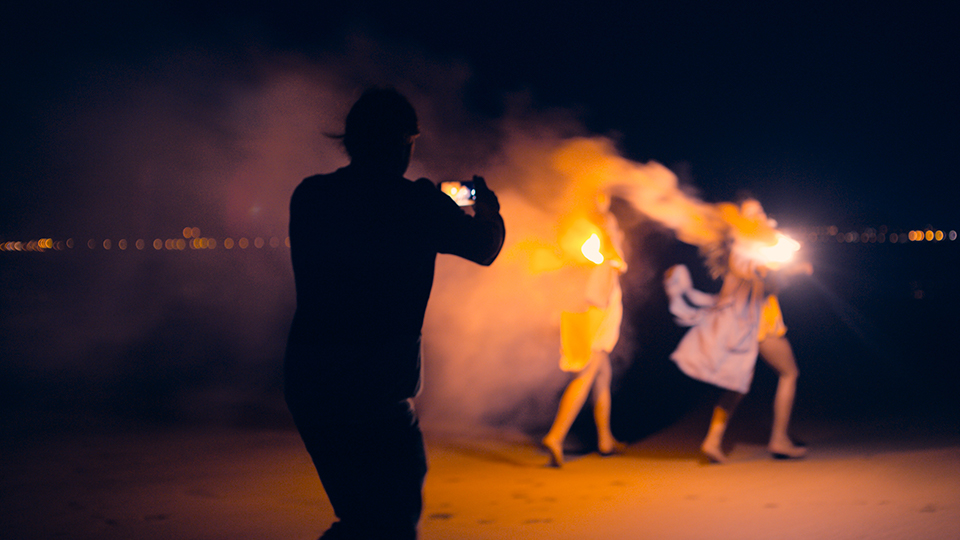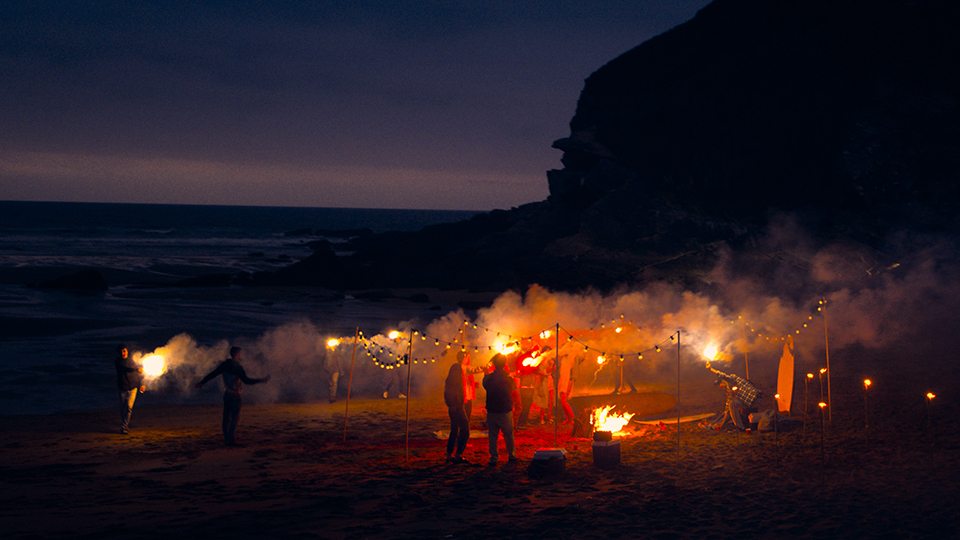Shoot in Pro mode
Samsung’s recent smartphones – the Galaxy S9, S9+ and Note9 – feature a Dual Aperture lens, which automatically adapts to the amount of light available, just like the human eye. If it’s dark, the lens opens even more to pull in all the light and brighten up your photos. If it’s bright, the aperture shifts to ensure your photos look clear and detailed.
This means that Samsung’s flagship phones automatically take great photos in low-light conditions – without having to fine-tune the settings first. However, you can create even more impressive photos in low-light by playing around with the advanced settings in Pro mode.
Open your camera, click on Pro and give it a go.
Turn off the flash
Your smartphone photos will almost always turn out better without any flash, even when it’s dark. That’s because the flash provides an intense and uneven blast of light that ends up bouncing all over the place and washing out all the detail from your photos.
Artificial light can also play havoc with skin tones – so the people in your picture could end up looking like ghosts. Make the most of natural light if possible and use Pro mode to create better photos.

Adjust the ISO
The ISO icon is on the far-left of the display when you open Pro mode on your Samsung smartphone. Click on it and scroll to adjust the ISO from 50 up to 800.
ISO means how sensitive the sensor is to light. A high ISO means the sensor is super-sensitive to light, a low ISO means it’s not sensitive at all.
Generally speaking, you want to keep this number as low as possible – even when it’s dark. If you set it too high, your image is likely to be very noisy and lack detail and colour definition.
Don’t be tempted to push the ISO right up just because you’re shooting at night time, there are other ways around this, such as changing the aperture and shutter speed.
Alter the aperture
Aperture refers to the hole in the lens. You can change the size of the hole to allow more light in. The Galaxy S9, S9+ and Note9 let you switch between two different sizes – F1.5 and F2.4.
F1.5 lets in more light, so it’s ideal for poorly lit environments where you want all the available light to make it into your photo. It also means you won’t have to push the ISO right up, which can lead to noisy images.
F2.4 is better for daytime shots, because less light is needed and you have more control over the depth-of-field and can create stylish bokeh effect images more easily.

Switch up the shutter speed
You can adjust both the aperture and shutter speed by clicking the little lens icon (next to ISO). Underneath the aperture number you can scroll across to adjust the shutter speed – from 1/24000 to 10.
These numbers control how long the shutter stays open and exposed to light. The higher the number the longer the shutter will stay open for. The lower the number, the faster the shutter will close.
High numbers, like 10, will make your photos extremely bright. Low numbers, like 1/24000, will make you images incredibly dark.
While a slower shutter speed captures more light, it also means there’s more chance of motion blur in your photo, because you have to stay still for longer while the shutter stays open. This is a better option for still images, unless you’re trying to get a blurred motion effect.
A faster shutter speed is better for fast moving subjects, because there’s less chance of motion blur creeping in. But you’ll be sacrificing the amount of light and detail in your image.
A tripod is often used when taking photos with a slow shutter speed – but that’s not always practical with a smartphone. The optical image stabilisation built in to Samsung smartphones can help to reduce the amount of
motion blur when taking these type of photos.
Check the Exposure Value
When in Pro mode, on the far right of the display you’ll see a little +/- icon. You can’t click on this, but it will give you an indication of how bright or dark your photos will be using the settings you’ve adjusted – ISO, aperture and shutter speed.
With automatic settings selected the number will show as zero. Any minus number indicates that your images will be darker, while any plus number suggests your images will be brighter. With low light photography, it’s better to be slightly on the plus side.
The best way to find out which settings suit you is to have a play around in Pro mode.
Discover how to photograph fireworks >

